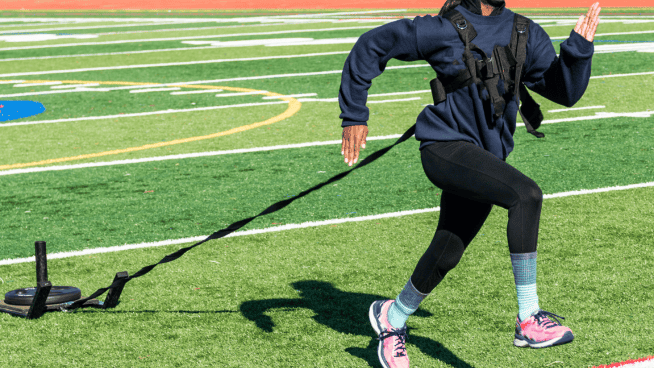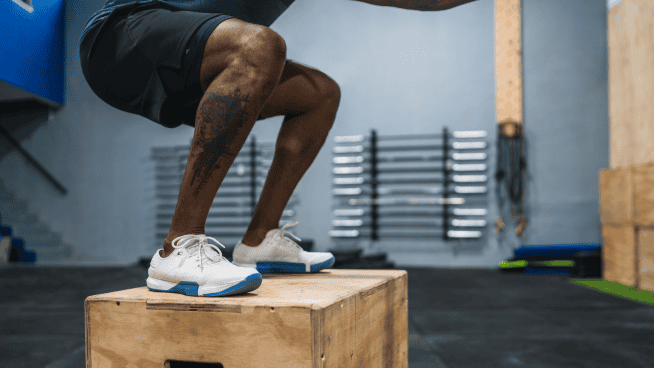The Role of Flexibility and How It Affects Your Game
Welcome to the first installment of the Flexibility Comprehensive Guide! With your loyal readership, over the next few months we’ll dive into the world of flexibility with help from some of the nation’s top strength and conditioning experts and athletes to find out how it can help take your game to the next level.
Topics that will be covered are listed here in order:
1. The role of flexibility and how it affects your game
2. Dynamic
3. Static
4. Ballistic
5. PNF
6. Isometric
7. Passive
8. Active
9. Game day
10. Pre-game
11. Post-game
Each topic will include a definition, examples, routines, benefits, drawbacks, when and when not to perform, and how to incorporate into a workout. Flexibility covers a broad area, and it’s our goal to explain any confusing terms and provide you with useful information you can integrate into your workout regimen. So, let’s not waste any time and dive into the first topic.
The Role of flexibility and how it affects your game
Flexibility is the joint’s ability to move through a full range of motion. If your movements imitate the Tin Man from the Wizard of Oz, it’s time to amp up your flexibility program to prevent injury and become a complete athlete.
“Good stretching can increase both flexibility and athletic performance, and can decrease the chance of injury,” says Tim Grover, owner and CEO of A.T.T.A.C.K. Athletics and one of the world’s top basketball performance enhancement coaches. “All stretches are important, and a stretching routine should be personalized based on individual needs and weaknesses.”
Injury prevention is one benefit you’ll gain by incorporating flexibility into your routine. Flexibility increases a joint’s range of motion, relaxes muscles, increases mobility, decreases stiffness in muscles and tendons and reduces post-exercise soreness. When a muscle is properly stretched, the associated joints become more flexible and range of motion increases. Not achieving this level of flexibility will leave your muscles tight and stiff around a joint, and the area becomes more injury-prone.
“A lot of the [flexibility] stuff we do is called ‘preventative maintenance’,” says Elias Karras, founder of EFT Sports Performance [Highland Park, Ill.] and trainer to Chicago Bulls G/F Luol Deng. “It’s just to make sure we protect [Luol’s] joints and the smaller muscle groups, so he is training with full mobility and range of motion to avoid injury.”
Flexibility isn’t just about preventing a pulled hammy though. It directly impacts your athletic performance. Being inflexible will severely hinder your speed, because you’ll have resistance in tissue structures (muscles around the joint). For example, if you lack flexibility in your hips, you won’t have the necessary range of motion while running, which will make you slower. Your stride length will be shorter, and that equates to a slower athlete. Flexibility also plays a vital role in strength training. If a muscle isn’t flexible enough to perform an exercise through its full range of motion, you won’t increase muscle strength and joint flexibility.
“Flexibility is a huge component to your performance in sports,” says Arizona Diamondbacks strength and conditioning coach Nate Shaw. “Improve your flexibility and you can become quicker, faster, stronger and more durable.”
In addition, flexibility will improve your recovery and increase circulation. It promotes blood flow to your muscles and prepares the body for vigorous activity by increasing muscle elasticity, which decreases the likelihood of tearing a muscle and developing muscle soreness. If you do suffer an injury, flexibility will help to speed up your recovery time.
“If athletes ignore stretching or skip flexibility sessions, then they will see a varying degree of pain and soreness and won’t have the ability to recover from an injury quickly,” says LaMonte Vaughn, former assistant track and field coach for the University of Washington.
So there you have it—the nuts and bolts of what flexibility is and how it affects your game. I know I threw a ton of information at you (and will continue to), so please don’t hesitate to contact me with any questions or concerns during our voyage through the sea of flexibility. If I don’t know the answer, I will find out! Keep an eye out for the second installment: dynamic flexibility.
RECOMMENDED FOR YOU
MOST POPULAR
The Role of Flexibility and How It Affects Your Game
Welcome to the first installment of the Flexibility Comprehensive Guide! With your loyal readership, over the next few months we’ll dive into the world of flexibility with help from some of the nation’s top strength and conditioning experts and athletes to find out how it can help take your game to the next level.
Topics that will be covered are listed here in order:
1. The role of flexibility and how it affects your game
2. Dynamic
3. Static
4. Ballistic
5. PNF
6. Isometric
7. Passive
8. Active
9. Game day
10. Pre-game
11. Post-game
Each topic will include a definition, examples, routines, benefits, drawbacks, when and when not to perform, and how to incorporate into a workout. Flexibility covers a broad area, and it’s our goal to explain any confusing terms and provide you with useful information you can integrate into your workout regimen. So, let’s not waste any time and dive into the first topic.
The Role of flexibility and how it affects your game
Flexibility is the joint’s ability to move through a full range of motion. If your movements imitate the Tin Man from the Wizard of Oz, it’s time to amp up your flexibility program to prevent injury and become a complete athlete.
“Good stretching can increase both flexibility and athletic performance, and can decrease the chance of injury,” says Tim Grover, owner and CEO of A.T.T.A.C.K. Athletics and one of the world’s top basketball performance enhancement coaches. “All stretches are important, and a stretching routine should be personalized based on individual needs and weaknesses.”
Injury prevention is one benefit you’ll gain by incorporating flexibility into your routine. Flexibility increases a joint’s range of motion, relaxes muscles, increases mobility, decreases stiffness in muscles and tendons and reduces post-exercise soreness. When a muscle is properly stretched, the associated joints become more flexible and range of motion increases. Not achieving this level of flexibility will leave your muscles tight and stiff around a joint, and the area becomes more injury-prone.
“A lot of the [flexibility] stuff we do is called ‘preventative maintenance’,” says Elias Karras, founder of EFT Sports Performance [Highland Park, Ill.] and trainer to Chicago Bulls G/F Luol Deng. “It’s just to make sure we protect [Luol’s] joints and the smaller muscle groups, so he is training with full mobility and range of motion to avoid injury.”
Flexibility isn’t just about preventing a pulled hammy though. It directly impacts your athletic performance. Being inflexible will severely hinder your speed, because you’ll have resistance in tissue structures (muscles around the joint). For example, if you lack flexibility in your hips, you won’t have the necessary range of motion while running, which will make you slower. Your stride length will be shorter, and that equates to a slower athlete. Flexibility also plays a vital role in strength training. If a muscle isn’t flexible enough to perform an exercise through its full range of motion, you won’t increase muscle strength and joint flexibility.
“Flexibility is a huge component to your performance in sports,” says Arizona Diamondbacks strength and conditioning coach Nate Shaw. “Improve your flexibility and you can become quicker, faster, stronger and more durable.”
In addition, flexibility will improve your recovery and increase circulation. It promotes blood flow to your muscles and prepares the body for vigorous activity by increasing muscle elasticity, which decreases the likelihood of tearing a muscle and developing muscle soreness. If you do suffer an injury, flexibility will help to speed up your recovery time.
“If athletes ignore stretching or skip flexibility sessions, then they will see a varying degree of pain and soreness and won’t have the ability to recover from an injury quickly,” says LaMonte Vaughn, former assistant track and field coach for the University of Washington.
So there you have it—the nuts and bolts of what flexibility is and how it affects your game. I know I threw a ton of information at you (and will continue to), so please don’t hesitate to contact me with any questions or concerns during our voyage through the sea of flexibility. If I don’t know the answer, I will find out! Keep an eye out for the second installment: dynamic flexibility.










